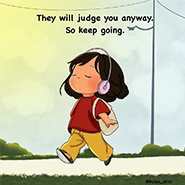In the rapidly evolving world of technology and culture, new trends emerge almost daily. As we move into 2024, several innovations and movements are set to redefine how we interact with digital platforms, consume content, and create experiences. From memes to artificial intelligence, here are the top 10 viral trends that will shape the future of 2024.
1. AI-Generated Memes: The Future of Humor
Artificial Intelligence (AI) has already begun influencing the creation of memes. AI-powered tools are being used to generate humorous, personalized memes based on current trends, social movements, and even individual user preferences. These memes can spread faster than ever before due to their personalized nature, engaging specific audiences more directly.
Present:
AI tools like DeepAI and Mematic are already allowing users to create and personalize memes in seconds. These tools analyze trends, current events, and popular formats to generate content that's relevant and shareable.
Future:
In 2024, AI will continue to improve in terms of contextual awareness. Expect to see memes that adapt in real-time based on user interaction, personal preferences, and viral trends. The future of memes may include AI-created viral challenges or memes that evolve depending on how they are shared across social media platforms.
2. Metaverse and VR Integration: The New Digital Reality
The Metaverse is a virtual universe, where users can interact with each other, play games, work, and shop in a fully immersive, 3D environment. Virtual Reality (VR) technology is the backbone of the metaverse, enabling realistic, immersive experiences.
Present:
Currently, platforms like Roblox, Horizon Worlds, and Decentraland are at the forefront of bringing the metaverse to life. These platforms are popular for entertainment, socializing, and even virtual real estate. Many companies are also experimenting with VR for meetings and product launches.
Future:
In 2024, we expect more brands and individuals to transition their activities into the metaverse. Virtual storefronts and immersive experiences like virtual shopping or attending live concerts in a digital environment will become more common. As VR technology becomes more accessible, the metaverse could become as integral to daily life as the internet is today, offering a space for work, socializing, and entertainment all in one virtual world.
3. Sustainable Fashion: The Green Revolution in Style
Sustainable fashion focuses on minimizing environmental harm while promoting ethical practices in production, materials, and labor. With global concerns over climate change, consumers are demanding more eco-friendly options in the fashion industry.
Present:
Brands like Patagonia and Everlane are already champions of eco-conscious fashion, using recycled materials, offering transparency about production processes, and promoting a more sustainable way of consuming fashion. Social media influencers are also helping to spread awareness about eco-friendly fashion choices.
Future:
By 2024, circular fashion (reusing and recycling garments) and bio-fabrication will likely be at the forefront of fashion design. We may see clothes made entirely from plant-based materials or wearables powered by renewable energy. Expect more brands to incorporate sustainability into their core business models, with second-hand marketplaces and clothing rental services becoming mainstream.
4. NFTs and Digital Collectibles: A New Era of Ownership
Non-Fungible Tokens (NFTs) represent ownership of a unique digital asset, such as art, music, or virtual goods, stored on a blockchain. These digital assets are gaining traction across art, gaming, and even real estate.
Present:
NFTs have already disrupted the art world, allowing digital artists to sell their work in unique, verified ways. Platforms like OpenSea and Rarible are marketplaces where digital art, collectibles, and even music can be bought and sold. The entertainment and gaming industries are also beginning to explore the potential of NFTs to create virtual goods and experiences.
Future:
In 2024, NFTs will likely extend beyond art and collectibles, becoming a major tool for virtual real estate, exclusive digital experiences, and metaverse items. Expect more mainstream brands and celebrities to adopt NFTs, using them for everything from digital fashion to music releases, enabling a new wave of ownership and scarcity in the virtual world.
5. AI-Powered Content Creation: The Automation Revolution
AI is transforming content creation by automating everything from writing and design to video production and even music composition. This technology has already revolutionized how content is created, making it faster, cheaper, and more accessible.
Present:
AI tools like ChatGPT, DALL·E, and Synthesia are being used to generate blog posts, social media content, and even deepfake videos. These tools can create content quickly, often tailored to a specific audience, making it easier for businesses to engage their users.
Future:
In 2024, AI will be integral in producing content at scale. Expect AI to create personalized experiences, from custom articles and videos to hyper-targeted ads and AI-generated music. These tools will help creators focus more on the strategic side of content and less on the labor-intensive creation process.
6. Short-Form Video: Dominating Social Media
Short-form video, made popular by platforms like TikTok, Instagram Reels, and YouTube Shorts, has become the dominant content format on social media. These videos, usually less than 60 seconds long, capture attention quickly and drive engagement.
Present:
TikTok continues to lead in short-form video content, pushing viral challenges, trends, and content discovery. Brands are using this format for quick, engaging ads, while influencers use short-form videos to connect with their followers.
Future:
In 2024, short-form video will continue to dominate social media platforms. Brands and creators will adopt short-form video as the primary medium for engaging users, promoting products, and creating viral content. Expect smarter AI algorithms that allow videos to adapt to individual tastes, making them even more personalized and engaging.
7. Voice Search and Smart Assistants: The Sound of the Future
With the rise of smart speakers and voice assistants like Alexa, Google Assistant, and Siri, voice search and voice-enabled interactions are becoming more common in everyday life.
Present:
Smart devices are already being integrated into homes, allowing users to play music, set reminders, check the weather, and shop online just by using their voice. Voice search is also becoming more prominent in mobile and desktop search engines.
Future:
Voice search and assistants will become even more integrated into everyday life. By 2024, we may see more sophisticated voice assistants capable of understanding natural speech and contextual cues. Additionally, voice-enabled shopping will become more mainstream, and AI-powered voice assistants could anticipate user needs before they ask.
8. Green Tech: Sustainability Meets Innovation
Green technology refers to innovations that promote environmental sustainability, from renewable energy solutions to eco-friendly devices.
Present:
From solar-powered devices to electric cars, the push for clean energy has become a significant movement. Companies are integrating sustainability into their products, and consumers are increasingly concerned about their environmental impact.
Future:
In 2024, green technology will expand beyond clean energy into other industries like transportation, agriculture, and fashion. Carbon capture and solar-powered innovations will likely dominate, driving the transition to a more sustainable future. These technologies will not only help protect the planet but also create new job opportunities in green industries.
9. Interactive Livestream Shopping: The Future of E-Commerce
Livestream shopping, a trend popular in Asia, allows influencers and brands to sell products in real-time while interacting with their audience.
Present:
Platforms like Instagram Live, TikTok, and YouTube are already implementing livestream shopping features, enabling real-time product demos, discounts, and direct purchases.
Future:
In 2024, livestream shopping will become more immersive and personalized. Expect AI-powered recommendations and real-time analytics to guide shopping decisions, creating a more interactive and dynamic shopping experience for users. Brands will leverage these platforms to build more engaging relationships with their customers.
10. Digital Detox: Finding Balance in a Tech-Driven World
As technology becomes increasingly pervasive in our lives, the need for a digital detox—taking a break from screens and social media—has gained importance.
Present:
More people are recognizing the need to disconnect, using techniques like mindfulness and limiting screen time to reclaim their mental well-being.
Future:
In 2024, we’ll likely see a greater emphasis on digital wellness, with new tools and apps designed to help users balance their online and offline worlds. The rise of wellness influencers and corporate wellness programs will help people unplug and focus on their health.
Conclusion: The Future of These Technologies and Their Impact on Society
As we move into 2024, these technologies are not just shaping the way we interact with the digital world—they’re influencing human connection, creativity, and innovation. While these advancements have the potential to improve quality of life, streamline processes, and foster global collaboration, they also bring challenges.
The future of these technologies will depend on how we manage their growth. AI, VR, and voice assistants will undoubtedly lead to a more connected world, but they could also cause job displacement as automation takes over traditional tasks. Sustainability will continue to be a focus, but questions remain about the ecological footprint of rapidly developing technologies.
In the end, while these innovations will help make the world more efficient, they could also challenge our sense of privacy, work-life balance, and human interaction. As we embrace these technological shifts, it’s crucial that we also consider their long-term effects on the next generation and work to ensure that the future remains a positive and equitable place for all.

 Sangram Keshari
Sangram Keshari









